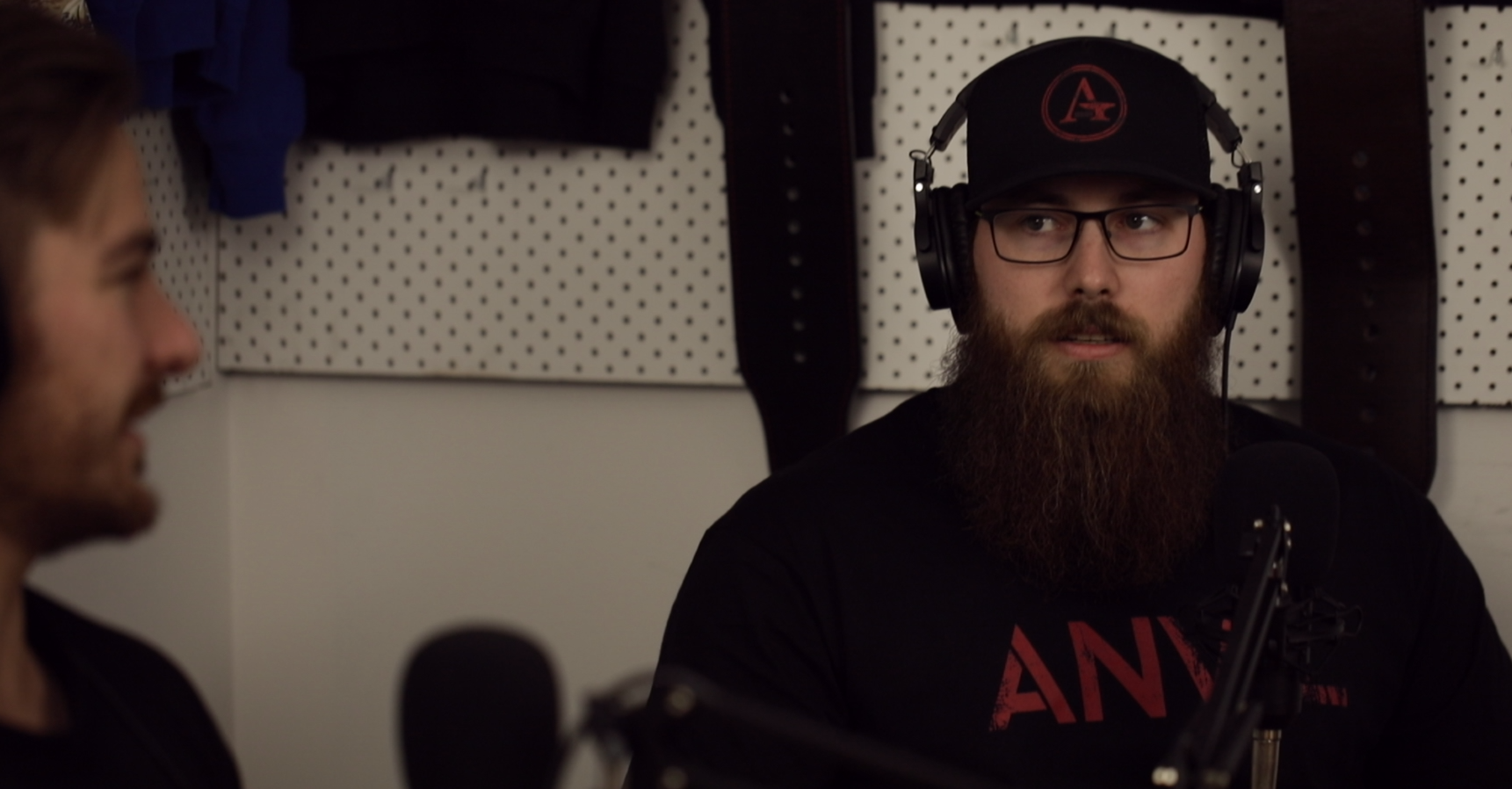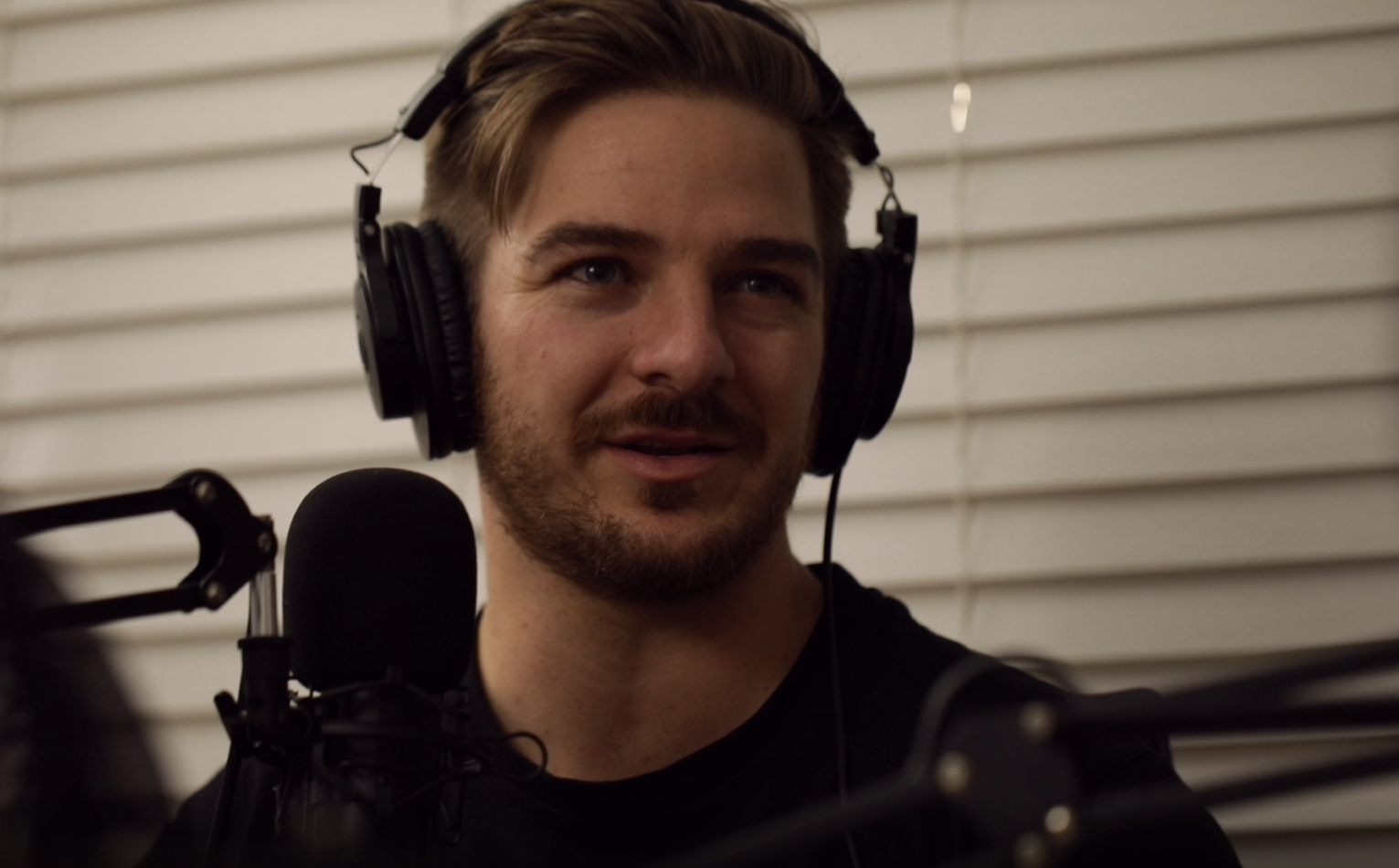Highs and Lows

An Anvil T&D opinion article by Daniel Hunt
The pursuit of happiness is an extremely common and understandable path for many people - and, why wouldn't it be? What better ultimate goal could there be than happiness - whatever that may mean for you. It is important to consider the factors that contribute to happiness differ from person to person - money, family, travel or health (just to name a few). However, in the pursuit of anything in life, the road is rarely smooth or linear - so, the risk of becoming disheartened as our goals seem further away than before is very real. Sometimes, we may feel similar negative feelings if we’re in the same place or even further along than we were before. Most people likely attribute these feelings up as “just having a bad day/week”, and do their best to keep going - which in itself is a sign of tenacity, an attribute everyone should strive to cultivate through life considering the aforementioned ‘rough roads’ that we all encounter. Unfortunately, many of these ‘low points’ will adversely affect our day to day quality of life, reducing our personal satisfaction levels and ability to perform - contributing to the emotional and mental lows. At some point, everyone has read or heard some motivational story about an individual who has pulled themself from rock bottom to achieve great things, while others may have personally experienced examples of people who haven’t managed to pull themselves out - a version of the story much less commonly discussed. The severity of a low point varies with circumstance, but like anything out of your control - what is in your active control is how you choose to respond. In this article I’ll be discussing possible causes, management and getting out of low points. I’ll be aiming to present information that is scalable to different levels and circumstances, as no two experiences are ever exactly the same.
Causes of Lows
A key step in most situations is to identify the ‘why’ - since if you want to fix something, what’s wrong needs to be known. It is not always simple to accurately find the root cause, as challenges to mental health aren’t things you can just plug up like a busted drain pipe. You can, however, seek assistance from others - family, friends or medical professionals. But as far as what may be causing the negative emotions you’re experiencing, there are two general categories we can use - external and internal.
External
Common external causes of emotional and mental lows are things that we’re all familiar with - relationship issues, work or financial troubles and any other unenjoyable event you can imagine. These can be considered ‘stressors’, and as the name implies - they cause us to feel stress. When I refer to stress, think of that as a more generalised experience, as stress can be physical, mental and emotional - not just the kind you might feel when you’re running late to work. Illness or highly intense physical activity is an example of how physical stress can be placed on someone, which will likely have flow on effects to a person’s mental and emotional state. Stressors may come from individual sources, however, the negative impact each one leaves can have an additive effect - building on any other stress currently being experienced. ‘The straw that broke the camel's back’ is a saying that is relevant in this context, as all it takes is one too many sources of stress before a low point can hit.
Internal
Internal stressors are more complex than their external counter-parts, as they are generally much less obvious. Internal stressors can also be woven into external stressors - complicating the experience. Possible internal causes are much more closely related to an individual’s mental health - such as past or current trauma, chemical production and balance within the brain or established cognitive patterns of thinking we’ve built over our lives. The increased difficulty in identifying internal causes doesn’t make them any less important when it comes to management.The important parameter is the impact it’s having on your daily life, entirely dependent on your subjective experience. Additionally, the root cause of internal turmoil may be from an experience you share with someone you know - however, not everyone responds to similar experiences in the same way. What this means is that negative feelings can be exacerbated when we feel as if we aren’t worthy of them, because “If others can deal with it, why can’t I?”
Managing Low Points
You most likely know when you’re experiencing a personal emotional low, however, some common signs of a low point are: feelings of agitation, sadness, withdrawal from your surroundings, hopelessness, lack of sleep/over-sleeping, poor diet and taking poor care of yourself. None of these signs are uncommon, and we likely feel them to a lesser extent at least once a week. If any of these things are negatively impacting your quality of life, then there is a need to more thoroughly address and manage them. How you track that negative impact can differ, as unless someone else points out the difference in your behaviour - you may not be aware of it.
A general sign that your emotional state and behaviour are in need of immediate review and longer term management is to reflect on how long it has been since you last felt what you consider ‘normal’. You may not be able to realise how long your friends have noticed a change in your behaviour, but you may be able to identify how long you’ve been feeling sad or agitated. Looking back at your week and reflecting on your moods through each day is a much easier individual thought process than trying to imagine how friends or co-workers may have perceived us. One day of negative emotions could just be a bad day, but a week or longer of bad days is likely a rut. If you can identify that you may be at a low point, or even just having a bad day - you should be looking to take a step towards active management. As I mentioned, it may not always be an easy process to self-reflect and identify your stressors - so don’t be disheartened if this is taking you some time, or if you need to reach out to supportive others to help you work through this process. I want to emphasise that first step towards positively managing yourself, because any step - big or small, is largely important. Whether you choose to give yourself some extra time to relax and wind down after a long day, or talk to someone you trust about how you feel - recognise that you’ve done the right thing.
I also want to provide some basic mental techniques you can implement for three of the most common negative feelings you may experience:
- Angry/Frustrated: Breathing Exercises
Requiring no equipment and able to be done literally anywhere that isn’t underwater, breathing exercises are excellent for managing sometimes overwhelming emotional responses to our environments or circumstances. Box Breathing is a common and simple version(https://www.healthline.com/health/box-breathing#getting-started)
- Anxious: Grounding Techniques
Identify something from each one of your senses - See, Listen, Feel, Touch, Taste. Doing so helps you place yourself mentally in the here and now, and allows you to escape the negative thinking loops of ‘What if?’.
- Sad: Identify three things you’re grateful for
You may wish to write these down, or simply think them. Whatever you choose doesn’t have to be profound, it can be as simple as your morning coffee or 15 minutes of extra sleep. Negative self talk is a real danger to mental health, and identifying positives in your life is an activity not done enough.
Strategies to Pull Yourself Out
Positive strategies to pull yourself out of an emotional low point aren’t usually complex, though they can be intimidating or feel overwhelming when you’re at a low. No one enjoys feeling vulnerable, and that’s exactly what we are when in these periods. I will be naming three strategies, and while you may read them and think “Duh” - remember that they’re very commonly overlooked or ignored.
- Talk to someone
I will always advocate for reaching out to someone you trust, be that a friend, family member or mental health professional - because it works. Expressing how you feel is a necessary component of the human condition when it comes to a healthy mind - and while expression can be achieved in my ways, human connection can not be supplemented. If you don’t feel comfortable discussing your mental and emotional wellbeing with someone you know, there are options to call anonymous hotlines who can listen and discuss things with you. A link to our mental health resources page will be included at the bottom of this article within the ‘About Us’ section.
One more thing I’ll add - if you feel as if you’re unable to self-manage your emotional and mental health, then you should definitely seek consultation with a mental health professional. They don’t just write notes while you talk about your problems, they can work with you in building strategies to support you and your quality of life.
2. Lifestyle Adjustments
The changes no one wants to make, but are still necessary. No one can force you to do the activities I’m about to list, but you should at least be aware of them as beneficial - if you aren’t already. Partaking in some kind of daily physical activity which you don’t already do, such as walking - which studies have shown concurrently improve your mental health as well as your physical. It’s important to note that if you’re a fitness-head already, it can be beneficial to reduce the intensity you place on yourself through physical exercise. Exercise is a physical stressor, and should be approached intelligently - despite the ‘brute force’ ideas some may have about physical training. Improve your diet by including nutritious whole foods and consuming more water and limit your caffeine consumption, especially in the late afternoon and evenings.
Mental lifestyle adjustments are slightly different and may be less obvious as beneficial. Routine is especially important, providing structure to the day and consistency that positively supports the brain - things like waking up and going to sleep at set, consistent times to ensure you’re getting adequate sleep. You can make small adjustments to both work and recreation, such as changing the route or mode for your daily commute to work. Switch out an hour of television or computer time for reading or just listening to something like music or a podcast. Some of these may sound trivial, but they’re real activities and methods for improving your quality of life and mental/physical health.
3.Identify and solve the problem
This is the point that may make you think “Duh”, and I get that. However, an all too common theme for people is to ignore the cause of their problems. It’s important to remember that some things in life are out of our control, so the only thing you can do is control the way in which you respond. It is also important to consider that if you ask “why is this happening?” - you won’t always like the answer. As I have mentioned, identifying our causes of stress can be a process & a skill - it can take time. When this happens, we need to have patience and self-compassion - as beating ourselves up for taking the time. We all need to be open to not only improving our circumstances, but also ourselves. I will reference my original point here - the willingness to discuss with others and ask the question “Why is this happening?”. We can’t always identify these things ourselves, especially causations which may be too close to home.
Learning from Past Lows
Another point I’ll always advocate for is constant lifelong learning. Every experience is an opportunity to learn, and the best way to prepare for the future is to learn from the past. By not doing so, you open yourself to the same patterns & a failure for positive changes to work in the long-term - mistakes and mishaps you could have otherwise avoided or mitigated by implementing learning points from the last time you were faced with this situation. It isn’t always easy to do this, and we’re all guilty of making the same old mistakes at least once - but by breaking the cycle, we can move forward. By treating both our lows and how we work through them as a learning experience - we can adapt the way we deal with them, and build positive self-support strategies for when we face them again in future.
Conclusion
To conclude, it’s important to accept that negative experiences and emotions are inevitable - something of which I believe almost anyone with even a little bit of life experience is aware. These experiences are normal in our day to day at lesser degrees, but when they begin to impact our ability to function in daily life or ongoing quality of life - this is when we encounter our lows. Coping, managing and progressing from the negative aspects of the human condition is more difficult - vulnerability and a feeling of no control can have ramifications for which we aren’t always prepared. But, by implementing basic strategies, methods and a willingness to learn and adapt - we have the opportunity to pull ourselves out of the low, grow and improve ourselves. Remember to reach out to others often, and reflect on your own actions as well as the actions of others.
Train Smart. Train Hard.
About Us
Anvil Training and Development is a group of Australian veterans who care about the physical and mental health of veterans and emergency service workers. We’re passionate about ongoing education and working with others to implement positive change.
Instagram: Anvil Training & Development - @anvil.td
Facebook: Anvil Training & Development - @anvil.td
www.anviltd.com
(Article Edited, Proof Read, and Fact-Checked by Charlotte Officer)
VES Mental Health Resources: https://anviltd.com/pages/ves-australian-mental-health-resources









Leave a comment